Tucked between the thriving cities of Kirkland and Bellevue, Bridle Trails State Park is a breathtaking 489-acre sanctuary that feels worlds away from the busy urban landscape. Known as one of the premier equestrian parks west of the Mississippi, this unique destination combines natural beauty with rich recreational opportunities. With over 28 miles of lush forest trails winding through majestic Douglas firs and western red cedars, visitors can experience the true essence of the Pacific Northwest just minutes from downtown Seattle. Whether you come for horseback riding, peaceful hikes, or family adventures, Bridle Trails offers an escape that perfectly balances accessibility with wilderness charm.
What makes Bridle Trails State Park truly special is its dedication to equestrian activities while welcoming hikers, runners, and families seeking nature connection. The park’s well-maintained trail system, complete with four horse arenas and comprehensive facilities, creates a unique destination where you’re as likely to encounter a graceful horse and rider as you are a family on their weekend adventure.
How to Get to Bridle Trails State Park
Getting to Bridle Trails State Park couldn’t be more convenient for residents and visitors in the greater Seattle metropolitan area. Located between Kirkland and Bellevue, with its main entrance in Kirkland, the park sits in the heart of the Eastside, making it easily accessible from multiple directions.
From Seattle: Take I-405 North for approximately 12 miles. Exit at NE 70th Place (Exit 18) and turn right. Follow NE 70th Place east, then turn left on 116th Avenue NE. The main entrance will be on your right after about a mile.
From Bellevue: Head north on I-405 for about 6 miles to Exit 18 (NE 70th Place). Follow the same directions as above, or alternatively, take local roads via Bellevue Way NE north to NE 40th Street, then west to 116th Avenue NE.
From Redmond: Drive west on NE 85th Street, which becomes NE 70th Place, then turn right on 116th Avenue NE to reach the main entrance.
The park features multiple access points beyond the main entrance. Access Points: Off of NE 60th Ave — Bridlewood Circle; 125th Ln NE; 127th Ave NE These additional entrances provide convenient trail access for different loop combinations and parking options during busy weekends.
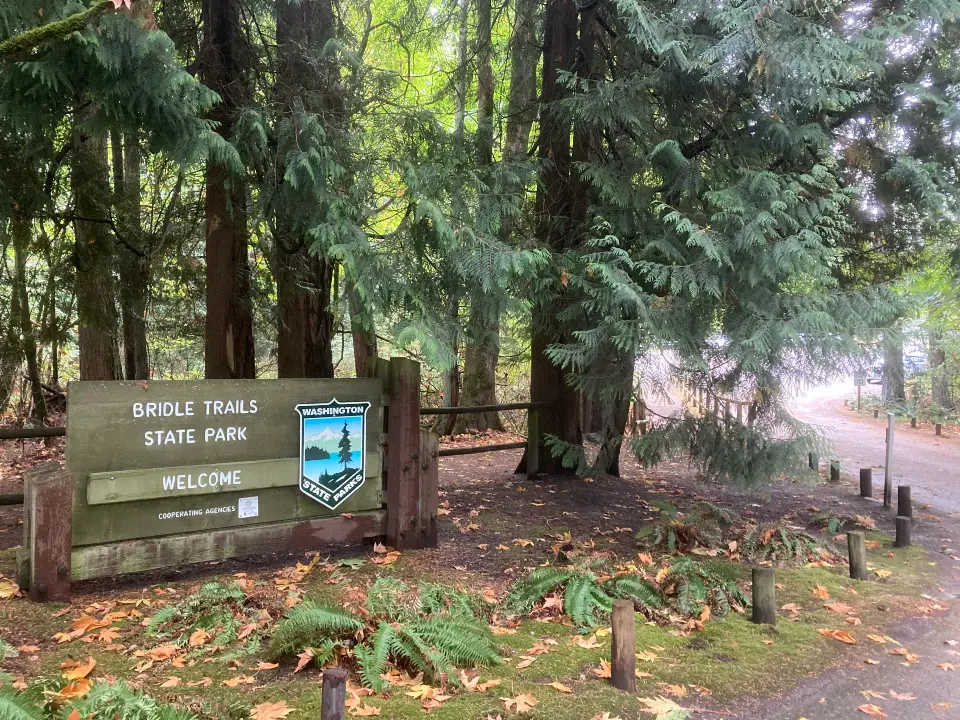
Public transportation options are limited, though Sound Transit and King County Metro provide some access to nearby areas. The closest bus stops are approximately a mile walk from the park entrances, making personal vehicle transportation the most practical option.
History and Culture of Bridle Trails State Park
The story of Bridle Trails State Park reflects the Pacific Northwest’s evolution from raw wilderness to managed conservation. The area’s history begins with the Coast Salish peoples, who used these forested lands for hunting and gathering long before European settlement. The towering old-growth forests that once dominated this region were largely harvested during the early 20th century logging boom that defined much of Washington’s economic development.
Workers with the Civil Works Administration cleared brush, burned logging debris, built trails and fences, and other efforts in initial park development. This New Deal-era project transformed logged-over land into what would become one of Washington’s most beloved state parks. The vision was ambitious: create a space where urban residents could experience the therapeutic benefits of horseback riding and forest recreation without traveling far from the city.
The park’s development accelerated in the 1960s when formal management agreements established its current operational structure. On March 6, 1962, the terms of the agreement between the Washington State Parks and Recreation Commission and the Commissioner of Public Lands for management of Bridle Trails State Park were updated, securing the park’s future through structured funding and management protocols.
A pivotal moment came in 2002 when community advocacy led to the creation of the Bridle Trails Park Foundation was established in 2002 to pay half the cost of park operations after funding from the state was reduced. This public-private partnership model demonstrates the community’s deep commitment to preserving this unique recreational resource. The foundation’s ongoing support has enabled trail improvements, facility maintenance, and expanded programming that keeps Bridle Trails State Park thriving.
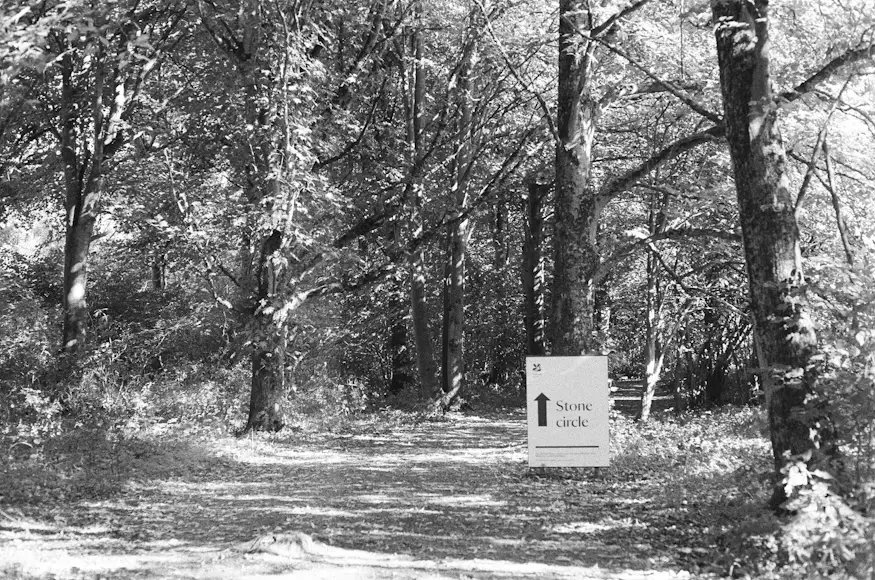
The cultural significance extends beyond recreation. The park serves as a living classroom where urban children experience their first encounters with horses, families discover the meditative qualities of forest walking, and equestrian enthusiasts maintain connections to traditional horsemanship skills. Regular events and educational programs foster a community that values both natural preservation and active outdoor engagement.
Best Things to Do in Bridle Trails State Park
Bridle Trails State Park offers diverse recreational opportunities that cater to various interests and skill levels. The park’s primary attraction remains its extensive trail system, but the experience extends far beyond simple hiking.
Horseback Riding and Equestrian Activities at Bridle Trails
As the park’s namesake activity, horseback riding represents the crown jewel of recreational opportunities. The park features four horse arenas, ample horse trails to explore, and hosts horse shows, organized rides and other equestrian events. The arenas provide safe spaces for training, lessons, and warm-up activities before heading onto the trail system.
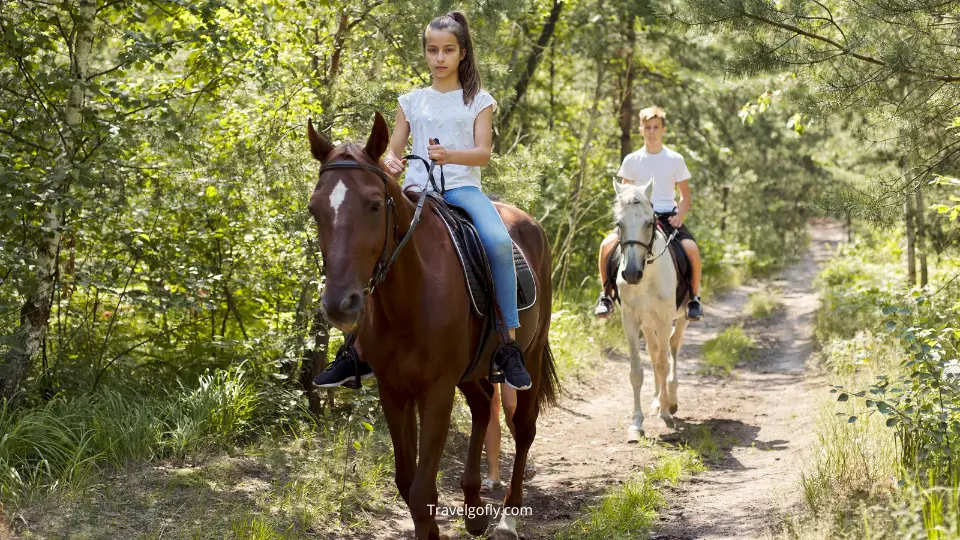
The bridle trail state park network includes trails of varying difficulty levels. Beginners can stick to the wider, more established paths near the arenas, while experienced riders can explore the more challenging single-track routes that wind deeper into the forest. Trail conditions are consistently maintained, with good footing and clear sight lines that prioritize safety for both horses and riders.
Hiking and Trail Running Trails in Bridle Trails State Park
There are three marked trail loops of varying distance, from 1 to 3.5 miles long. These designated hiking loops provide excellent options for visitors on foot, clearly marked and designed to minimize conflicts with equestrian users.
The Coyote Loop serves as the most popular hiking destination, offering a 3.2-mile journey through diverse forest ecosystems. Expect to encounter towering Douglas fir, delicate ferns carpeting the forest floor, and seasonal wildflowers that add splashes of color during spring and summer months.
For families with young children, the shorter 1-mile loop provides an excellent introduction to forest hiking without overwhelming little legs. The well-maintained trails feature gentle grades and interesting natural features that keep children engaged throughout the journey.
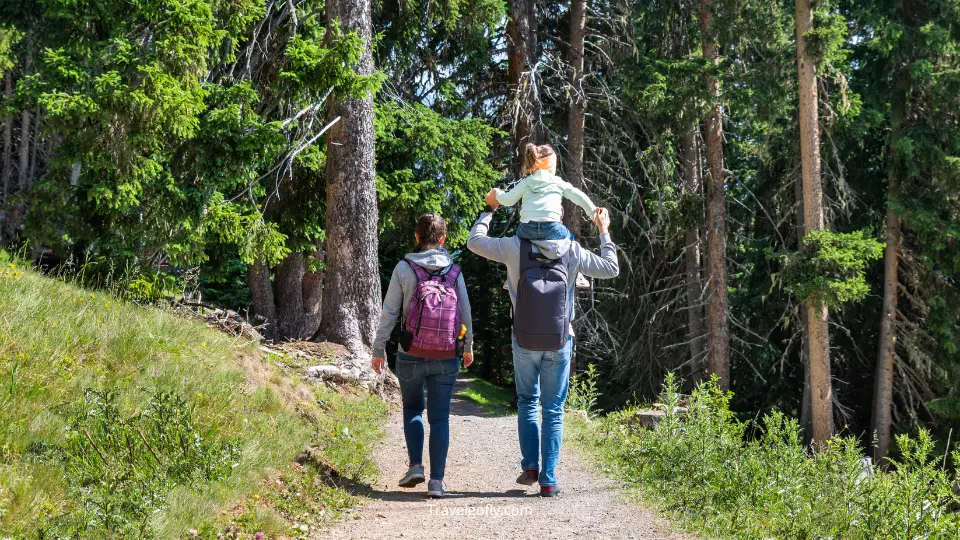
Trail runners appreciate the park’s soft, forgiving surfaces that reduce impact stress compared to concrete sidewalks. The varied terrain and multiple loop options allow for customized distance training while enjoying constantly changing scenery.
Wildlife Observation and Photography in Bridle Trails
The dense forest canopy and diverse understory create habitat for numerous wildlife species. Regular visitors often spot deer, various bird species, and small mammals. Early morning and late afternoon provide the best opportunities for wildlife encounters when animals are most active.
Photography enthusiasts find endless subjects, from macro shots of forest floor details to expansive canopy compositions that capture the Pacific Northwest’s iconic forest atmosphere. The interplay of light and shadow throughout different seasons creates dramatic photographic opportunities.
Family Activities and Nature Education Programs
Bridle Trails State Park serves as an excellent outdoor classroom for families wanting to introduce children to nature appreciation. The predictable trail system allows parents to plan appropriate adventures while the park’s proximity to urban areas means easy access to emergency services if needed.
Seasonal programs often include guided nature walks, equestrian demonstrations, and environmental education activities. These programs help families develop deeper connections to forest ecosystems and understand the importance of conservation efforts.
| Month | Season Highlights | Best Activities | Special Events & Notes |
|---|---|---|---|
| January – February | Quiet forest atmosphere, occasional mist and frost | Peaceful hiking, wildlife observation (deer and birds) | Winter nature walks by local guides (check Foundation calendar) |
| March – April | Spring blooms begin, mild temperatures | Hiking, trail running, photography | Wildflower season starts mid-April |
| May – June | Peak greenery, long daylight hours | Horseback riding, family picnics, trail runs | Annual Spring Equestrian Show |
| July – August | Warm and dry weather, busiest months | Horse events, early morning hikes, family outings | Summer Riding Clinics & kids’ nature programs |
| September – October | Autumn colors, cooler air | Photography, wildlife watching, relaxed rides | Fall Harvest Ride and guided nature walks |
| November – December | Quiet trails, moody Pacific Northwest ambiance | Reflective forest walks, short family hikes | Fewer crowds; great for solitude and forest photography |
Camping and Lodging Near Bridle Trails State Park
Bridle Trails State Park camping opportunities are limited, as overnight camping is prohibited within the park boundaries. This day-use only policy helps maintain the park’s urban accessibility while protecting sensitive forest ecosystems from the impacts of extended human presence.
However, the surrounding Eastside region offers numerous accommodation options for visitors wanting to extend their stay and explore Bridle Trails State Park over multiple days.
Hotels and Lodging Near Bridle Trails State Park
Kirkland Area:
- Heathman Hotel Kirkland: Upscale boutique hotel just minutes from the park entrance, featuring elegant rooms and excellent dining options
- Baymont by Wyndham Seattle/Kirkland: Budget-friendly option with clean, comfortable accommodations and complimentary breakfast
- Woodmark Hotel: Luxury lakefront property on Lake Washington with full-service amenities and spa services
Bellevue Area:
- Hyatt Regency Bellevue: Premium business hotel with modern facilities and convenient highway access
- Extended Stay America Bellevue: Ideal for longer visits with kitchenette facilities and pet-friendly policies
- Silver Cloud Hotel Bellevue Eastgate: Mid-range option with good value and easy park access
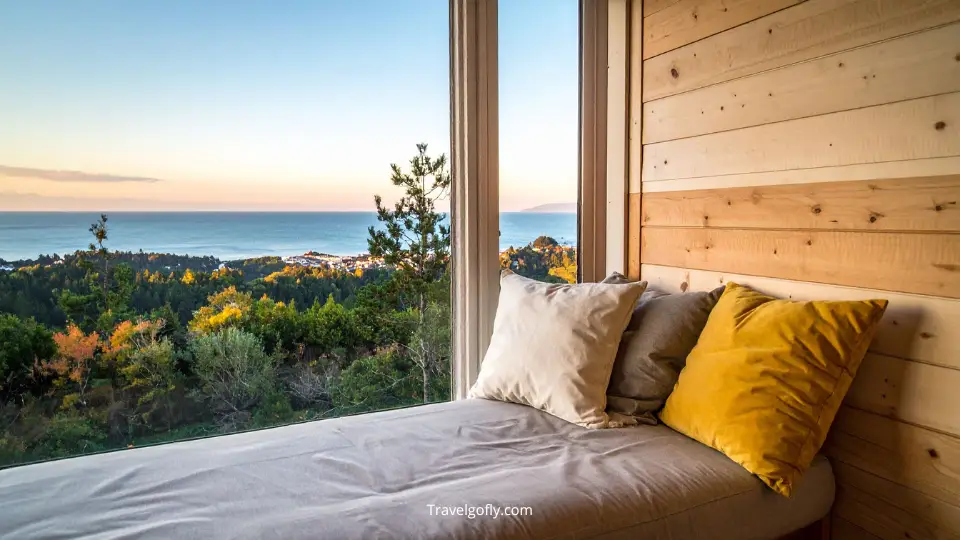
Alternative Camping Options Near Bridle Trails
While Bridle Trails State Park doesn’t offer camping, several nearby alternatives provide overnight options for outdoor enthusiasts:
Saltwater State Park (30 minutes south): Full camping facilities with both standard and utility sites, plus beach access and hiking trails.
Dash Point State Park (35 minutes southwest): Coastal camping with forest and beach environments, offering a different Pacific Northwest experience.
Private campgrounds and RV parks in the region provide additional options with varying amenity levels and pricing structures.
Visitor Information for Bridle Trails State Park
Planning your visit to Bridle Trails State Park requires understanding current operating procedures, fees, and facility availability.
Park Hours and Seasonal Access
Summer: 6:30 a.m. – Dusk · Winter: 8:00 a.m. – Dusk
The park maintains year-round access with seasonal hour adjustments that maximize daylight usage while respecting wildlife patterns and neighborhood considerations. Summer hours provide excellent opportunities for early morning visits when trails are less crowded and wildlife activity peaks.
Entry Fees and Passes at Bridle Trails State Park
Day use passes are $10.00 and available for purchase in the parking lot. Please note that pay stations at Bridle Trails State Park currently accept only cash or check as payment.
For frequent visitors, the Washington State Discover Pass represents better value at $35 annually, providing access to all Washington State Parks. Washington State Parks has announced these FREE DAYS in 2025, when the Discover Pass will not be required, typically including Martin Luther King Jr. Day and Veterans Day.
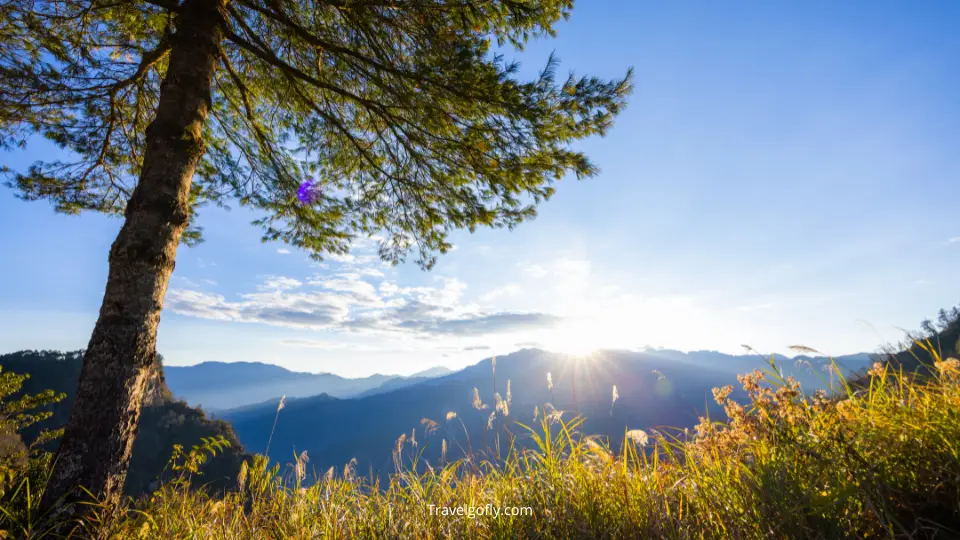
Parking and Access Information
When pulling into the large parking lot, the parking situation may look slightly confusing at first glance. The main parking area accommodates both regular vehicles and horse trailers, with designated spaces clearly marked. Weekend visits, particularly Saturday mornings, see the highest parking demand.
Multiple access points throughout the park provide alternative parking options during busy periods. The additional entrances also offer different trail starting points that can reduce crowding on popular routes.
Park Facilities and Amenities
- Restrooms: Located near the main parking area and horse arena complex
- Water fountains: Available for both humans and horses
- Horse wash stations: Specialized facilities for equestrian visitors
- Picnic areas: Small designated spaces for family meals and group gatherings
- Trail maps: Available at information kiosks and downloadable online
Rules and Guidelines for Visitors
Dogs are allowed, they must be kept on leash to avoid startling horses and hikers should always yield to horses on trails, step aside to allow equestrians to pass, and if approaching a horse from behind, hikers should verbally alert riders to ensure everyone’s safety.
Bicycles and motorized vehicles are not permitted on trails, maintaining the park’s focus on pedestrian and equestrian use while protecting trail surfaces and ensuring user safety.
Insider Tips for Visiting Bridle Trails State Park
After years of exploring Bridle Trails State Park, local enthusiasts have discovered strategies that dramatically improve the visiting experience.
Best Times to Visit Bridle Trails
Early morning weekdays provide the most serene experience, with fewer crowds and increased wildlife activity. The forest atmosphere feels particularly magical during these quiet hours when mist may still cling to the tree tops and bird activity reaches its daily peak.
Late spring through early fall offers optimal weather conditions, though the park’s dense canopy provides excellent protection during light rain a common Pacific Northwest occurrence that shouldn’t deter visitors.
Winter visits have their own charm, with the forest taking on a different character when deciduous understory plants lose their leaves, opening sight lines and creating different photographic opportunities.
What to Pack for Bridle Trails State Park
Essential items:
- Cash or check for parking fees (credit cards not accepted)
- Appropriate footwear with good traction for potentially muddy trail conditions
- Layers for changing weather conditions throughout the day
- Water and snacks for longer trail explorations
- Camera for capturing forest and wildlife scenes
For equestrian visitors:
- Current health certificates for horses
- Appropriate safety equipment including helmets
- Trail-appropriate tack and gear
- Clean-up supplies for responsible horse ownership
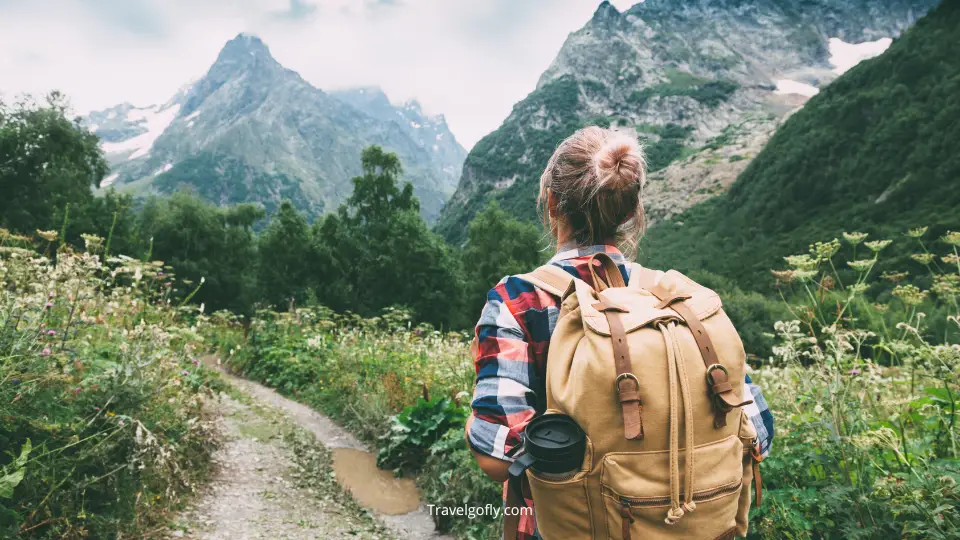
Hidden Spots and Local Knowledge
The southeastern trail sections tend to be less crowded and offer some of the park’s most pristine forest experiences. These areas showcase the mature second-growth forest that has developed since the original logging operations.
Morning light photography opportunities excel along the western trail sections where filtered sunlight creates dramatic forest scenes, particularly during autumn when deciduous plants add golden accents to the evergreen landscape.
Wildlife observation improves significantly near the park’s water features and seasonal wetlands, where animals come to drink and forage. Local regulars know that quiet, patient observation often rewards visitors with memorable encounters.
Combine Bridle Trails Visit with Nearby Attractions
The park’s location makes it excellent for combining with other Eastside attractions. Marymoor Park in nearby Redmond offers complementary activities including off-leash dog areas and concerts. The Cross Kirkland Corridor provides additional walking and biking opportunities that connect to Bridle Trails State Park.
Downtown Kirkland’s waterfront district and Bellevue’s shopping and dining scene are both within 15 minutes, making it easy to create full-day itineraries that blend outdoor recreation with urban amenities.
Bridle Trails State Park FAQ
Q: Can I bring my dog to Bridle Trails State Park?
A: Yes, dogs are welcome but must remain on leash at all times. This requirement protects both horses and dogs, as unleashed dogs can spook horses and create dangerous situations. The extensive trail system provides excellent exercise opportunities for leashed dogs.
Q: Do I need experience with horses to enjoy the equestrian aspects of the park?
A: Not at all! While many visitors bring their own horses, the park also attracts people who simply enjoy observing horses and riders. Bridle Trails State Park events often include educational demonstrations and beginner-friendly activities. Several local stables offer lessons and guided trail rides for newcomers to equestrian activities.
Q: Are the trails suitable for young children and strollers?
A: The main trails have natural surfaces that aren’t suitable for standard strollers, but older children who can walk independently will find the shorter loop trails manageable. The 1-mile loop provides an excellent family option with gentle terrain and interesting natural features to keep children engaged.
Q: What’s the difference between Bridle Trails State Park and other parks with horse trails?
A: Raven Rock State Park bridle trails and Mohican State Park bridle trail parking offer different experiences in other regions, but Bridle Trails State Park stands out for its urban accessibility combined with extensive dedicated equestrian facilities. The four arenas and comprehensive trail system create a unique destination specifically designed for horse activities.
Q: Can I camp at Bridle Trails State Park?
A: Bridle Trails State Park camping is not available as this is a day-use only facility. However, the surrounding area offers numerous hotel options and nearby state parks with camping facilities for visitors wanting overnight accommodations.
Q: When are the best times to avoid crowds?
A: Weekday mornings generally offer the most peaceful experience, while Saturday and Sunday mornings see peak usage. Late afternoon weekday visits can also be excellent, particularly during longer summer days when evening light creates beautiful forest atmospheres.
Why Visit Bridle Trails State Park
Bridle Trails State Park represents something truly special in the Pacific Northwest – a place where urban convenience meets authentic forest experience, where equestrian traditions thrive alongside modern recreation, and where families can create lasting memories just minutes from the bustling Eastside corridor.
Whether you’re an experienced rider seeking new bridle trail state park adventures, a family wanting to introduce children to nature appreciation, or simply someone needing a peaceful forest escape from urban stress, this remarkable 489-acre sanctuary delivers experiences that will draw you back repeatedly.
The park’s unique combination of accessibility, natural beauty, and specialized facilities creates opportunities that extend far beyond typical state park visits. From the therapeutic rhythm of horse hooves on forest trails to the simple joy of children discovering woodland creatures, Bridle Trails State Park offers something meaningful for every visitor.
Start planning your visit today by checking the official Washington State Parks website for current conditions and event schedules. Consider exploring nearby attractions to create full-day adventures that showcase the best of the Pacific Northwest’s natural and cultural offerings.
Have you visited Bridle Trails State Park? Share your favorite trail discoveries, memorable horse encounters, or family adventure stories in the comments below – your experiences might inspire other visitors to explore this hidden gem!
